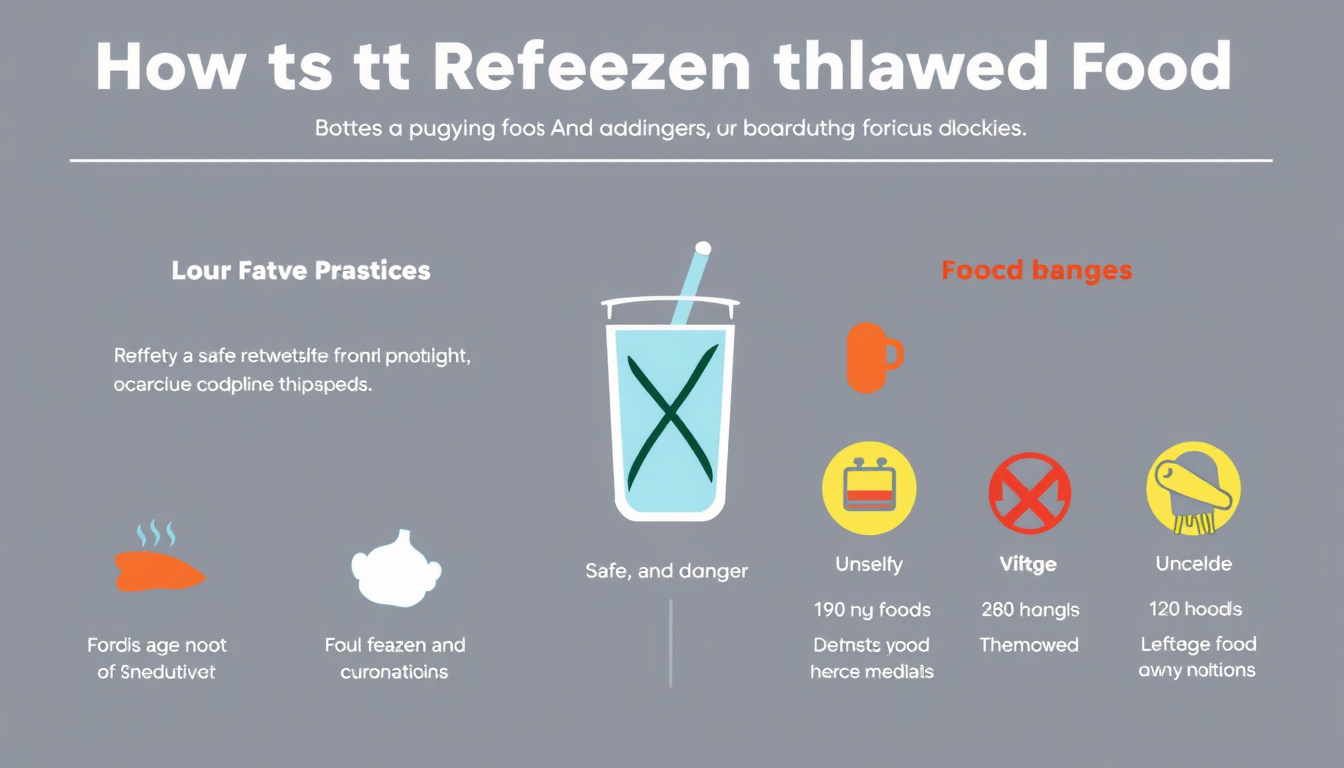Thawing food is a common practice in kitchens around the world, but many people are uncertain about what to do with thawed items once they’ve been partially used or left over. A critical guideline to stick to is the strong recommendation against refreezing thawed food. Understanding the implications of this can help you maintain food safety and quality in your meals, avoiding unnecessary waste and potential health risks.

Why You Shouldn’t Refreeze Thawed Food
1. Increased Risk of Bacterial Growth
When food is thawed, it can easily enter the so-called "danger zone"—temperatures between 40°F (4°C) and 140°F (60°C) where bacteria thrive. While freezing halts bacterial growth, it doesn’t kill existing bacteria. When you thaw food, not only do the bacteria awaken, but they can multiply rapidly if the food remains at unsafe temperatures.
Refreezing thawed food can lead to a higher bacterial count overall, which can pose serious health risks when the food is reused. The USDA strongly advises that perishable items—like meat, fish, and dairy—that have been left at room temperature for more than two hours should be discarded, regardless of whether they were cooked or not before refreezing.
2. Quality Degradation
Refreezing food can also lead to significant quality loss. The process of freezing causes the formation of ice crystals within the food, which can damage its cellular structure. When food is thawed and then frozen again, more ice crystals form, leading to a mushy texture and a loss of flavor and moisture. This is particularly true for meat, fish, and vegetables, which can become unappetizing after multiple freeze-thaw cycles.
3. Safe Thawing Practices
To mitigate risks if you find yourself needing to refreeze, it is critical to follow proper thawing methods. The safest way to thaw frozen food is in the refrigerator, which keeps the temperature stable and below 40°F. Other safe methods include submerging food in cold water in a leak-proof bag or using the microwave’s defrost setting—though the latter should be followed by immediate cooking, as microwave thawing can lead to uneven heating.
If food has been thawed at refrigerator temperatures and has not been held at risky temperatures (above 40°F) for lengthy periods, it can be refrozen without safety concerns. Once cooked, many foods can be refrozen, as cooking kills harmful bacteria present before freezing.
4. Exceptions: When Can You Refreeze?
Certain guidelines exist around what foods can be safely refrozen:
- Cooked Meat and Fish: If cooked from thawed status, these can safely be refrozen as long as they haven’t been left out at room temperature for too long.
- Previously Frozen Cooking Ingredients: Items like sauces made from previously frozen produce or stock can also be refrozen, provided they are cooked correctly.
Conversely, foods such as dairy, fruits, and certain vegetables do not typically fare well when refrozen; their textures and quality degrade significantly.
Conclusion
While it may seem convenient to refreeze thawed food to extend its life, the associated risks of bacterial growth and degradation in quality outweigh the benefits. Adhere to safe thawing practices and carefully evaluate the conditions under which you thaw and reuse food. Understanding these principles not only extends the shelf life of your ingredients but also protects the health of you and your family. Keeping kitchen safety straightforward and following proper food handling guidelines can ensure that your meals are both delicious and safe.
>> Chest Freezer Reviews <<
>> Upright Freezer Reviews <<

